A private outdoor space is one of the best reasons to buy a home. We dream of having our own space to show off to our friends, keep our kids busy (and tuckered out), and even earn a little extra cash.
Something no one tells you when you’re hunting for a house, however, is that there’s a surprisingly high chance your new house won’t have a fence in the backyard. The reasons for this vary, but it often comes down to cost and culture — fences can be expensive, and many people regard fencing as unfriendly and antisocial. Personally, I strongly believe in the old saying about high fences making for good neighbours.
Fences are also expensive. Fencing in your yard can run you nearly $4,000-$5000 on average, or much more depending on the material you choose, the size of your yard, and whether you’re hiring a contractor to install it or doing it yourself. If you just bought a house, you might not have a lot of cash lying around, and even if you’ve lived there a while, coughing up several thousand dollars for a project is never easy. Luckily, there are some easy, relatively affordable DIY fencing options you can use to mark your territory without breaking the bank.
Wood pallets
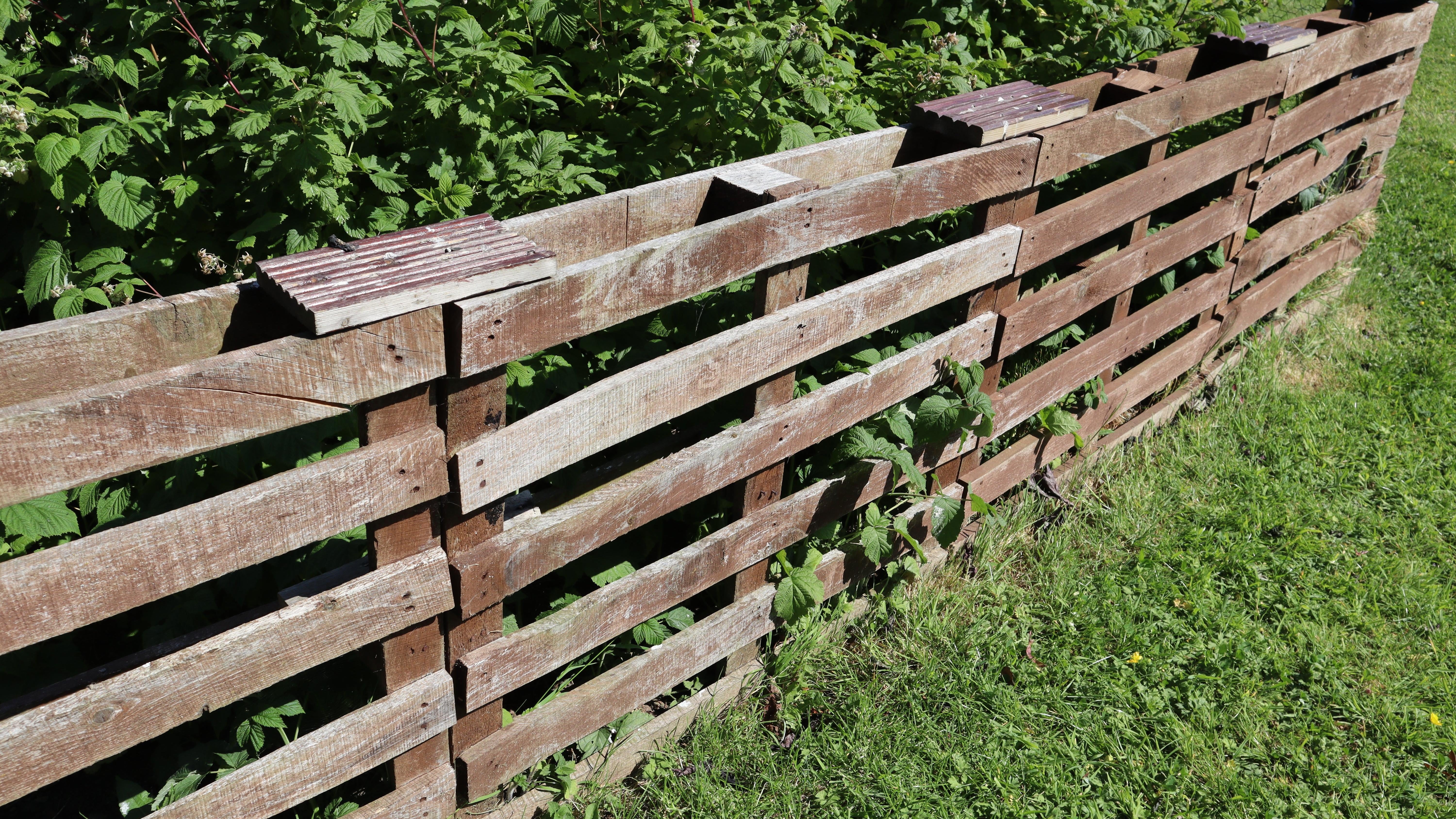
Pros: Wood pallets are those rough square platforms that stuff is delivered on. They’re literally everywhere, and anyone who has had a big delivery of construction or landscaping materials or large appliances likely has a bunch lying around. Warehouses and stores also tend to have a gazillion of them, often found in dumpsters around back. In other words, you can probably source them for free. One tip is to look for the International Plant Protection Convention (IPPC) logo — that means they were treated to resist insects and rot. You probably still need to stain or seal them, then attach them to posts — but then, ta-da! Cheapest fence in the world, and it will look rustic-chic.
Cons: Pallets aren’t exactly built to last. The ones you salvage will probably be very beat-up and weathered, and will require some TLC — you’ll need to stain or otherwise waterproof them, and probably replace some nails or screws to ensure their stability. And “rustic-chic” is one of those design goals that sounds great but often turns out much more rustic than chic, meaning it may take a lot of effort to get your fence looking nice.
Chain link
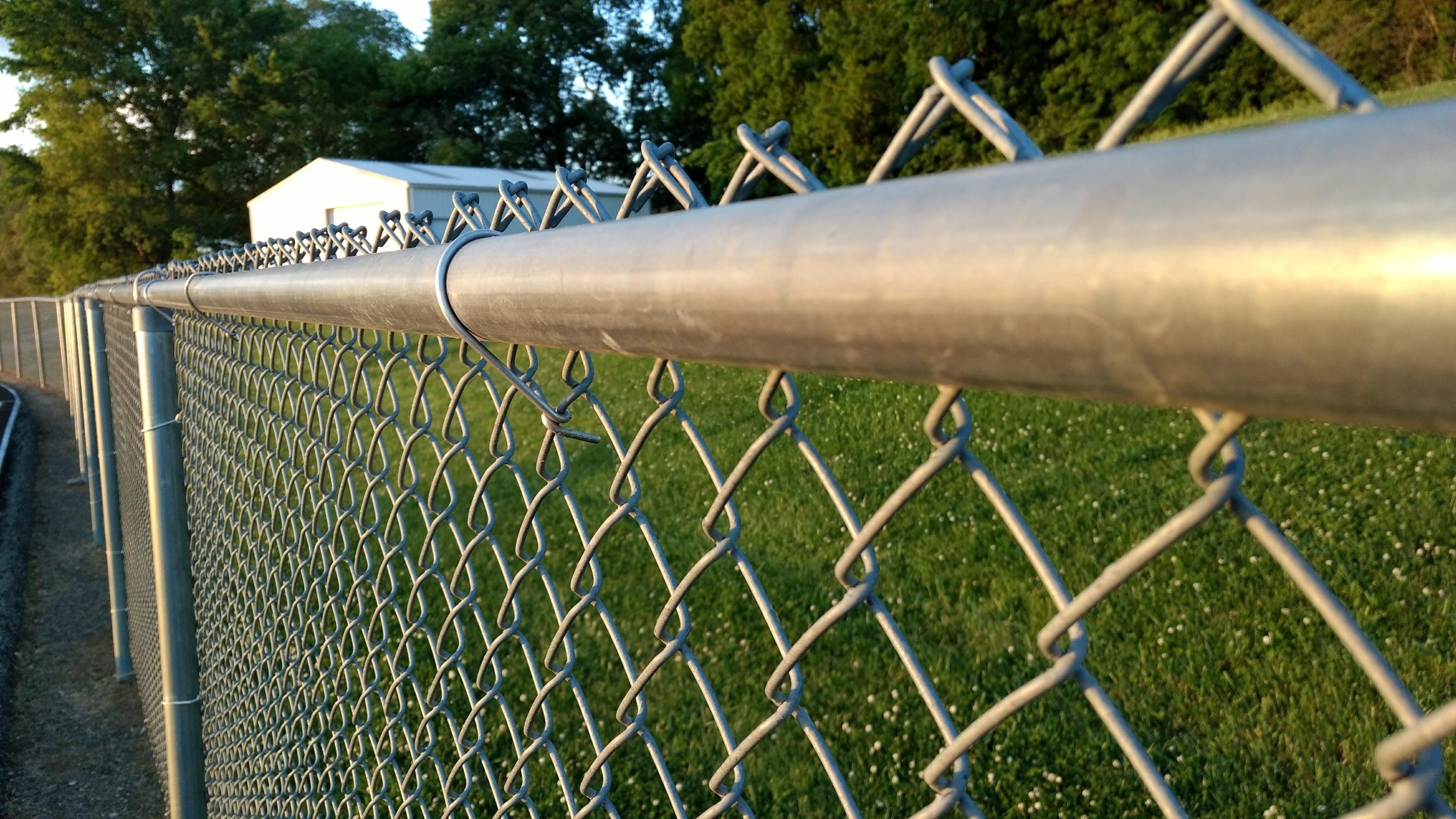
Pros: Mainly the low cost and relative ease of installation. If you wake up in the morning needing a fence you can probably have one up by end of day if you go with chain link. A standard 10×1800 m roll of chain link costs about $188. That doesn’t include posts, of course, or any caps or tension bands needed. But if all you want to do is quickly throw a fence up, you can attach chain link using just about anything, from zip ties to wire.
Cons: Chain link fencing isn’t the prettiest, and a sloppy DIY job will leave you with a sagging, uneven result that might do the bare minimum of fencing in your yard and very little else. You can improve matters by planting some vines that will slowly envelop your fence.
Bamboo
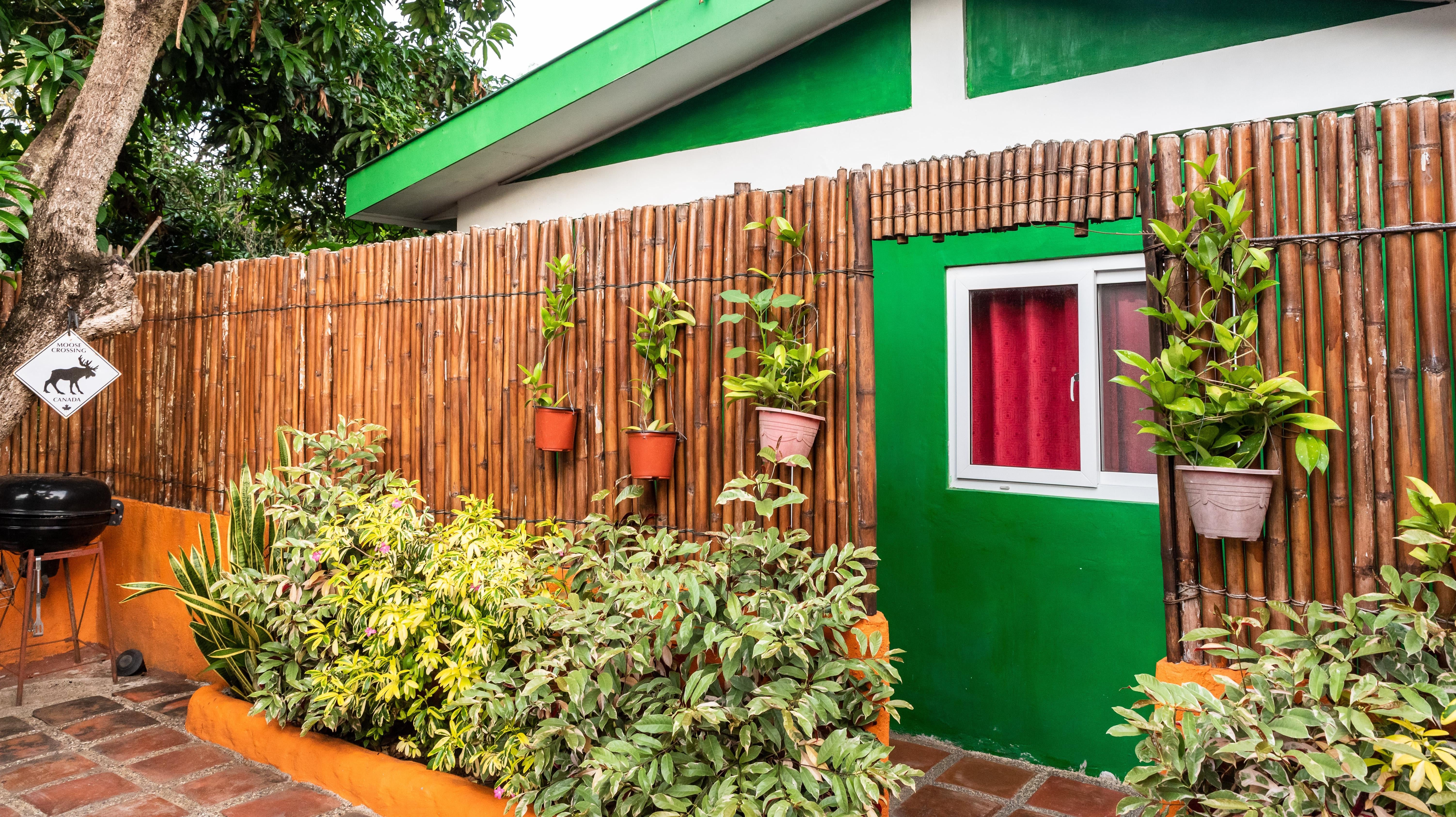
Pros: If you’re in the right climate, bamboo grows super fast — it can shoot up several feet in just a day. In fact, some species of bamboo are such good growers they will invade and take over your yard in no time if you’re not careful — and then your neighbour’s yard as well. Plant bamboo around the perimeter and you’ll have a living fence in a very short period of time, or you can let it grow to a desired height, cut it down, let it dry, and then use it as a lattice-style fencing material.
Cons: Aside from bamboo’s potential to conquer the entire block, it can grow inconsistently, leaving you with a lot of gaps, and unless you go through the trouble of cutting it down to create a lattice, it’s never going to look crisp. Plus, as a living plant, it will require some maintenance.
Chicken or hog wire
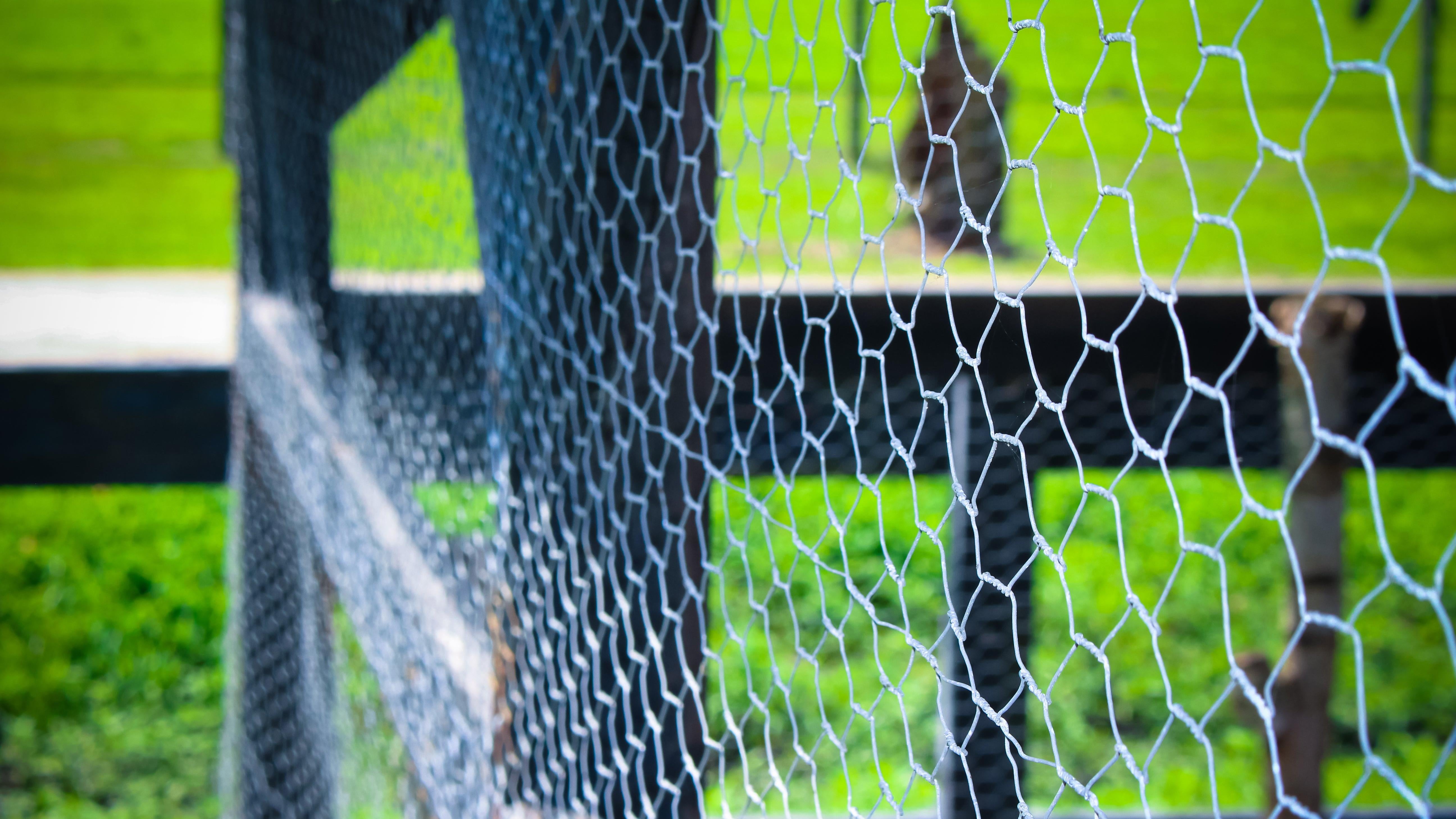
Pros: Aside from free options like pallet fencing, chicken or hog wire is hands-down the cheapest way to fence in any yard. Chicken wire is thinner and cheaper, while hog wire will be a little stiffer and a bit more pricey. But they’re both simple to install — you just need some wood posts You can attach the wire using staples, zip ties, or wire. And since it is designed to span pretty wide gaps, you don’t need a lot of posts, either.
Cons: Chicken wire and hog wire are…not attractive. At all. Sure, you can go for a rustic look in your yard and splurge on the posts, and you could also install climbing plants that will slowly hide your fence, but chicken wire fencing is never going to win you any house beautiful awards.
Stockade (aka dog ear) or picket
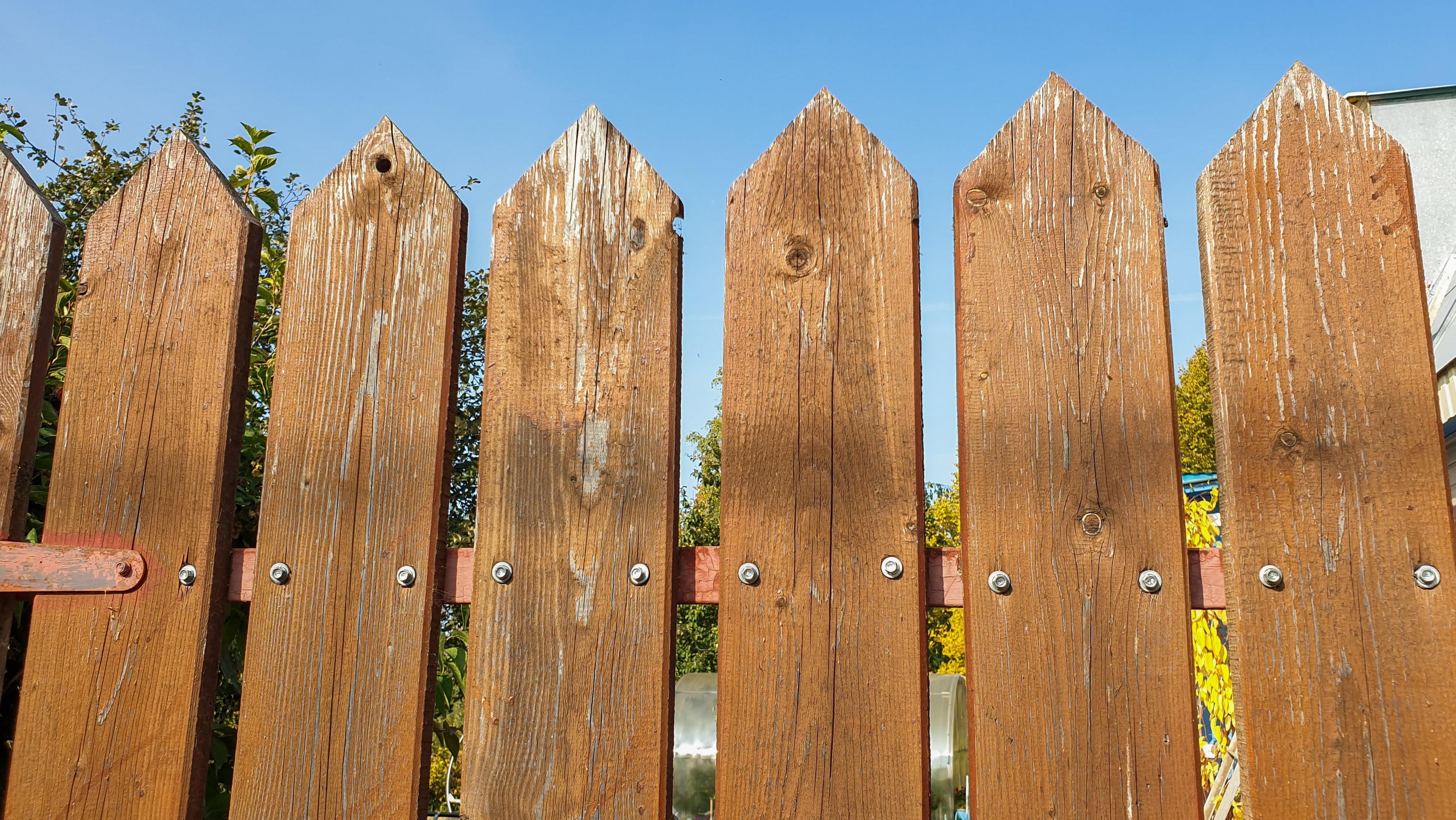
Pros: Wooden stockade fencing — sometimes called dog ear fencing because the peaked tops resemble, well, dog ears — is easy to find at any hardware store. You can get it pressure-treated against rot and insects, and it typically comes in 6×8 foot sections you can nail or screw into posts. Picket fencing is the same concept, but tends to be shorter (about 1.22 m high) and offers that classic suburban vibe, especially when painted white. Both options can be put up relatively easily and quickly.
Cons: Doing this DIY can lead to uneven fencing that appears to undulate up and down. If you want a neat look, expect to spend a lot of time measuring and cutting.
Corrugated metal
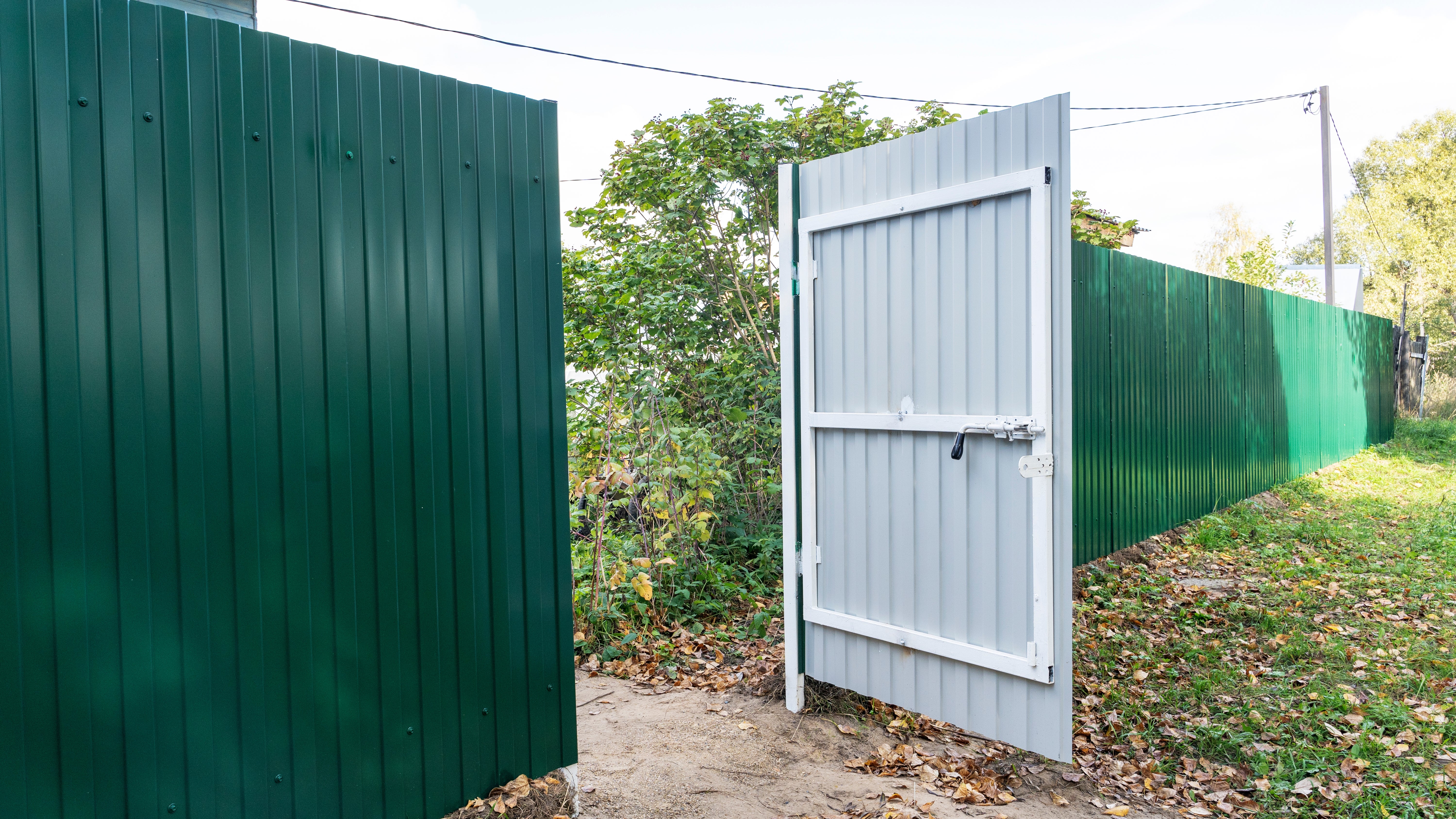
Pros: If you want to maximise your privacy, this is the way. Sheets of galvanised steel corrugated metal will give you an industrial look that can be quite elevated if done with care, and the end result will block all of your neighbours’ prying eyes. It’s pretty easy to use screws to attach it to wooden posts, too.
Cons: Installing corrugated metal can be challenging. It’s heavier than most other fencing materials, making it more difficult to handle and requiring more robust posts and framing. If you used recycled materials you could wind up with a lot of rust, which may or may not be the aesthetic you’re looking for.
Reed roll
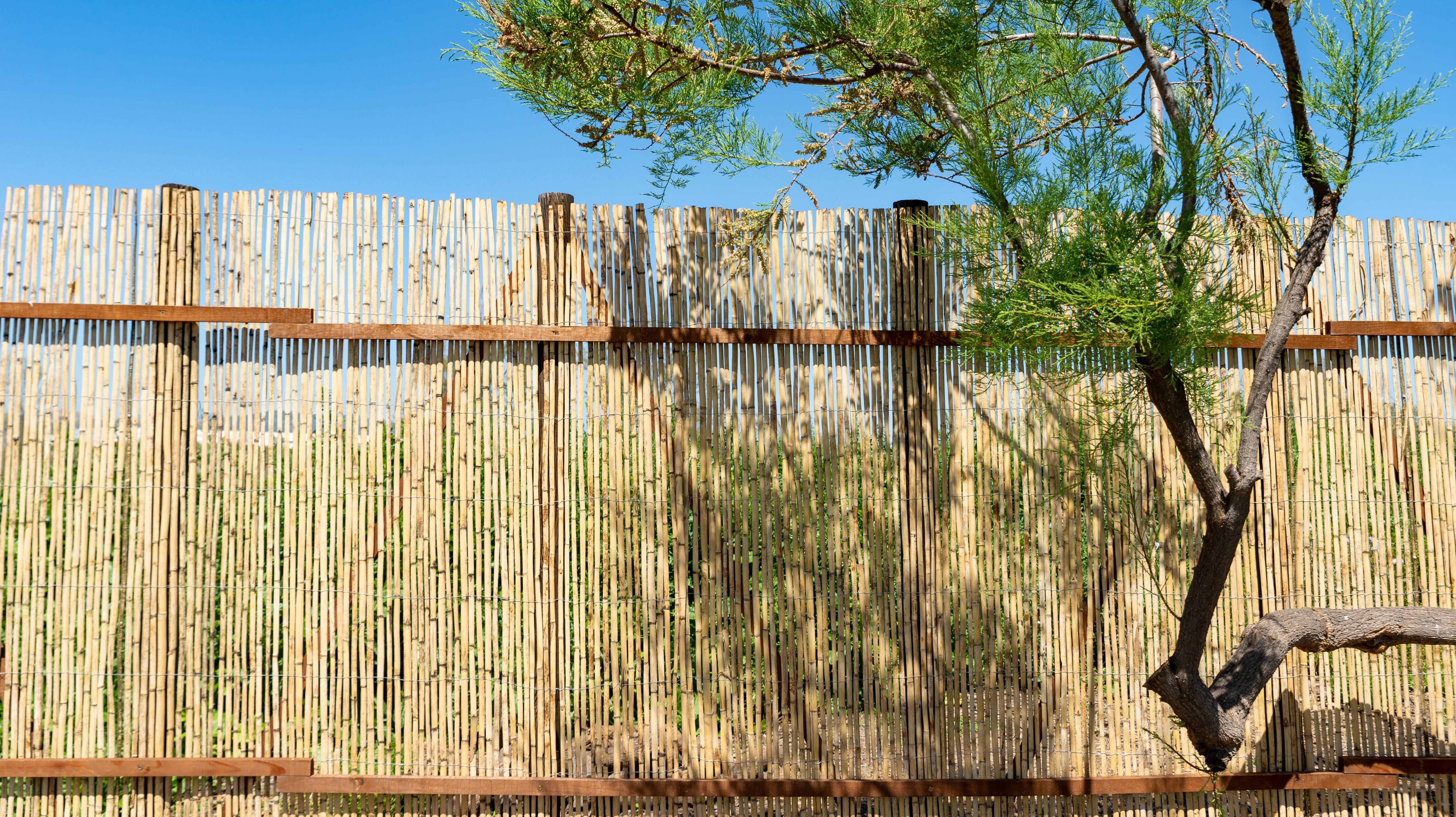
Pros: If you’re thinking about a bamboo-style fence but want it pre-cut and easy, reed roll can be found at most hardware stores and is incredibly easy to install. Just attach one end of the roll to a post, then roll it out and attach to the rest as you go. It won’t offer any security, but within a very short amount of time you’ll have a fence.
Cons: This won’t be the most durable fence you can put up, and it can wind up looking a bit ratty after a short time in the weather. In other words, this is cheap fencing that will look cheap.
Split rail
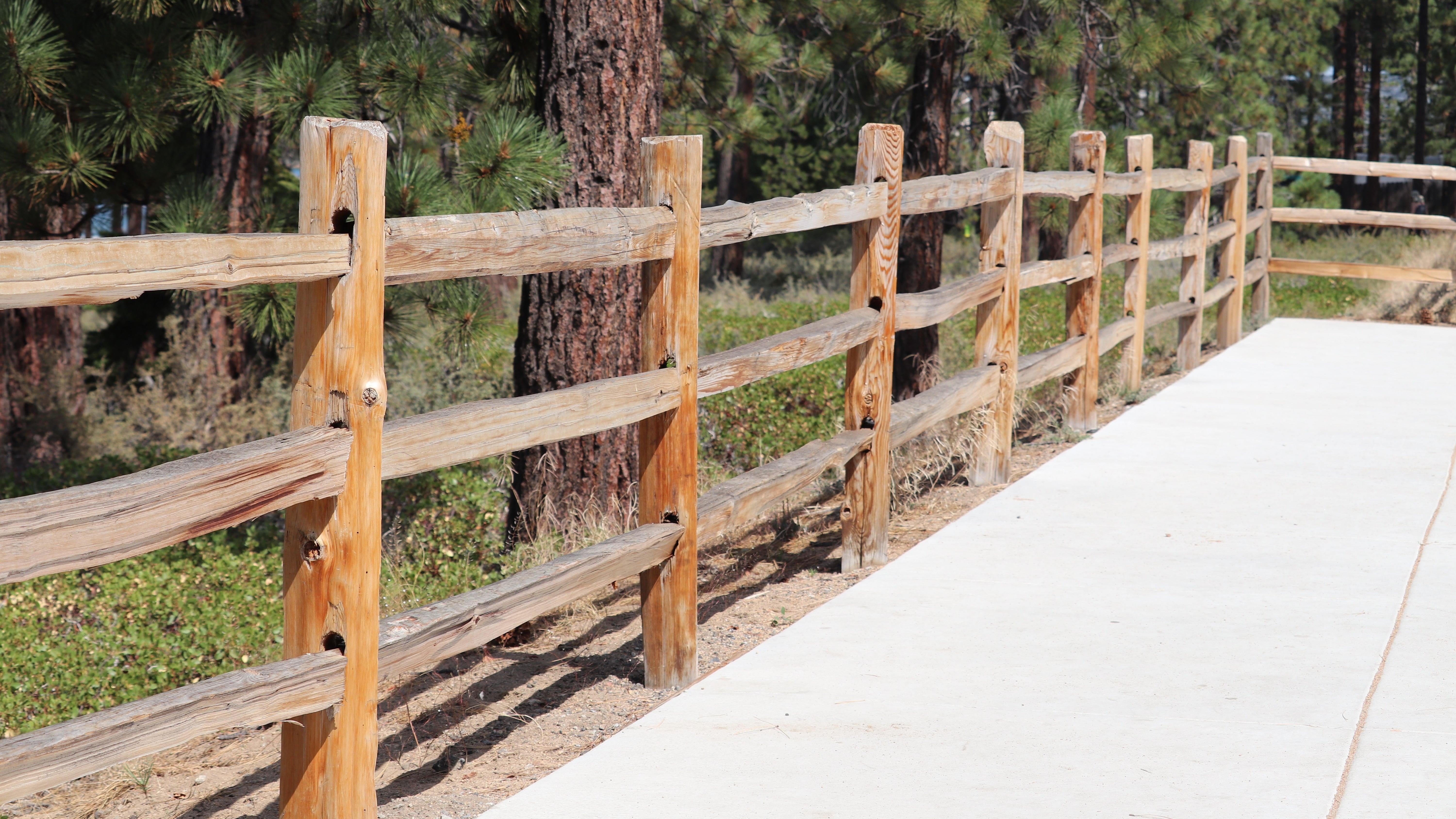
Pros: Split-rail fencing is what you think of when you imagine a ranch or old farm. Posts with holes carved into the sides hold up split logs with wide gaps between them. Because of those huge gaps it doesn’t use much wood, keeping costs very low depending on the type of wood you use and how tolerant you are of those gaps. You can increase some of the security factor by adding wire mesh to the fence, but this will also increase the cost.
Cons: There’s a near-total lack of privacy or security, and this fencing will only work with a pretty specific design concept — a split-rail fence around an ultra-modern house will look kind of weird.
Barbed wire
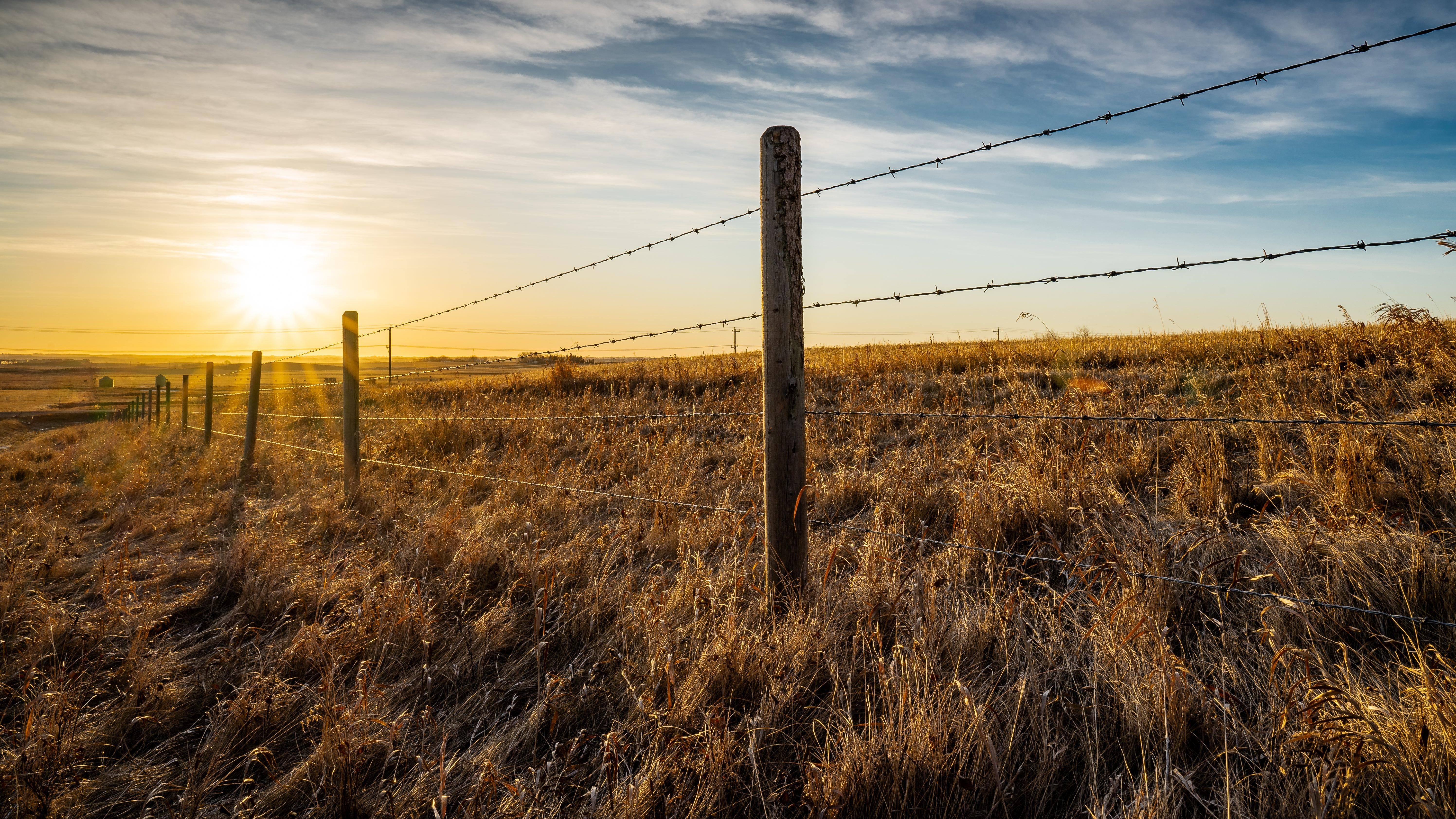
Pros: Like the birds say: Cheap cheap cheap. It also has a high security rating because it can be very painful to climb barbed wire.
Cons: Many, actually. It can be dangerous, and is typically forbidden outside of designated rural areas — definitely check with your local permit office before installing this, and even if it’s allowed consider whether you want to risk it. It can be dangerous to install, too, without the proper protective equipment.
Privet hedges
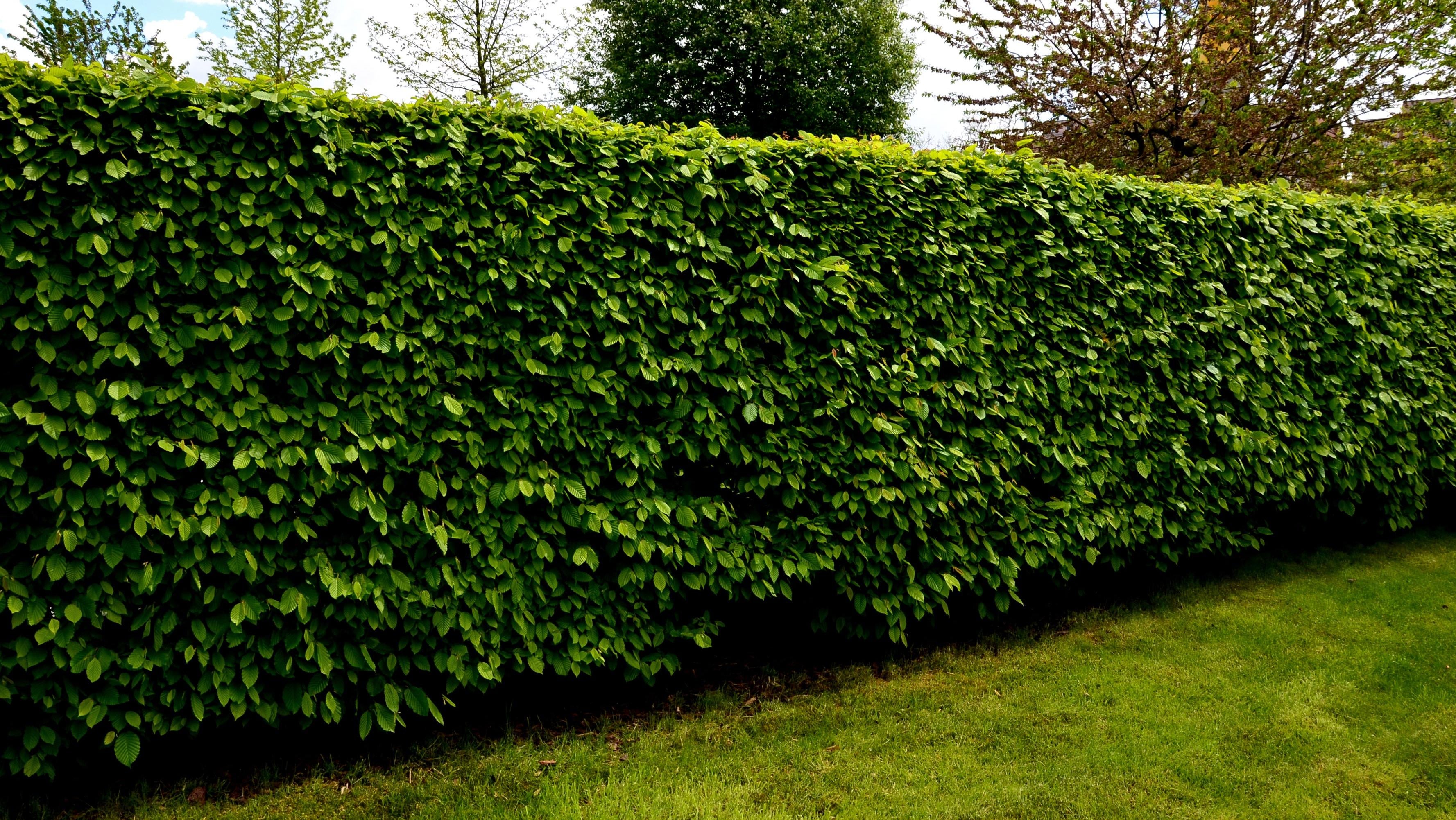
Pros: Planting privacy hedges aren’t going to secure your yard against intruders, but it can be an elegant and incredibly affordable way to gain privacy and mark off your property lines. These plants can grow as high as 3.05 m tall depending on the variety you choose, and can be trimmed any way you like.
Cons: If you’re planting from scratch, it will take a few years for the hedges to grow tall and full enough to resemble a fence. You can bring in mature plants, of course, but that’s going to be more expensive.
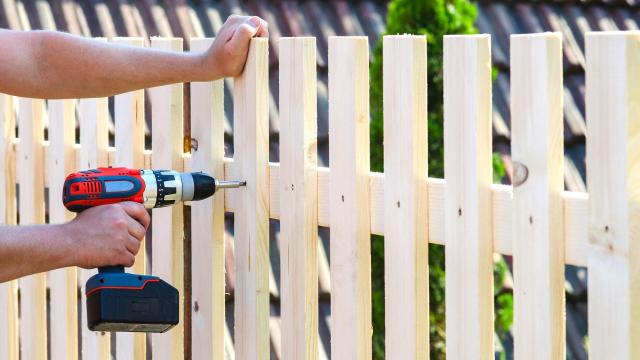
Leave a Reply
You must be logged in to post a comment.